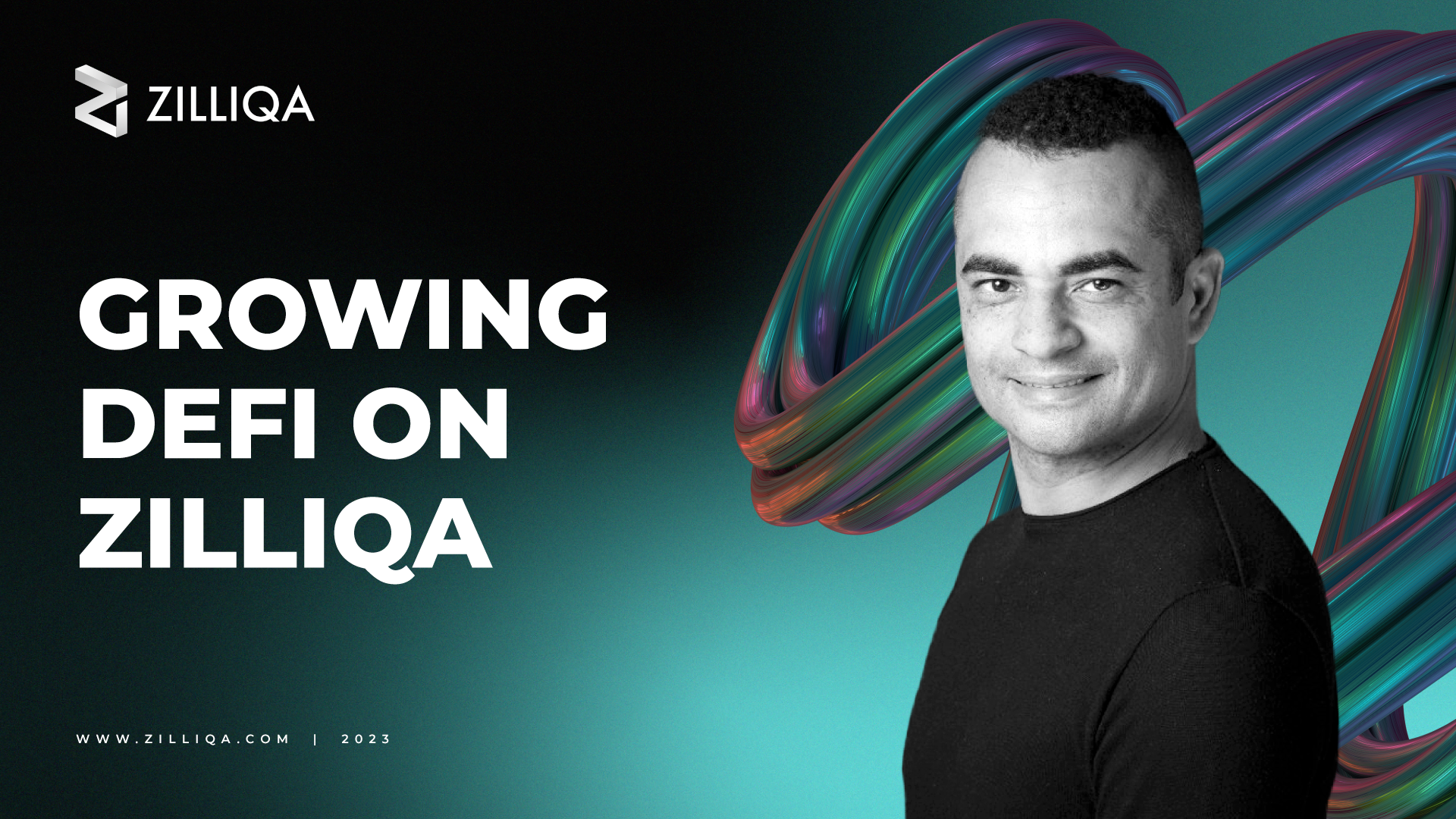The exciting future of DeFi on Zilliqa
With EVM and the upcoming launch of the Ionise money market protocol, 2023 is set to be a big year for DeFi on Zilliqa.

2023 is shaping up to be a big year for Zilliqa!
There are major upgrades coming to the network this year, from EVM compatibility launching on mainnet to the development of Zilliqa 2.0 coming to life by the end of the year.
Another key component for growing Zilliqa’s ecosystem this year is the development of DeFi tools and applications, beginning with the launch of Ionise - a money market protocol for short-term borrowing and lending - in Q1 2023. Ionise will be the first DeFi Solidity dApp deployed on the Zilliqa EVM.
EVM is just the first step to enable robust and explosive DeFi growth for Zilliqa as the network becomes more accessible to DeFi developers by allowing them to launch new and existing Solidity dApps on Zilliqa.
Opening the blockchain to Solidity dApps unlocks the potential for DeFi to become a major part of the Zilliqa network that will drive greater volume and adoption across all parts of the Zilliqa ecosystem.
We sat down with Zilliqa CEO Matt Dyer for a breakdown of Ionise and our exciting plans for the future of DeFi on Zilliqa.
Ionise - A strong foundation for DeFi growth
The development of a healthy and competitive DeFi ecosystem is a central priority for Zilliqa, Matt says.
“From an ecosystem growth perspective, it's right up there as one of the main priorities. I know from speaking with people that they have felt that Zilliqa only does gaming, and that definitely is not the case.”
The launch of EVM compatibility brings unprecedented access to the Zilliqa network and allows Solidity developers to easily build on a secure and scalable blockchain focused on delivering real utility.
“We're very much vertically aligned in terms of proving out specific use cases. EVM is the first step towards having a stronger, more robust enabler for creating a DeFi ecosystem as we open up the Zilliqa network to hundreds of thousands of Solidity developers and dApps overnight,” he says.
The upcoming money market protocol, Ionise, is the first building block towards creating a DeFi ecosystem with exceptional potential on the Zilliqa network that developers and people can leverage.
“Zilliqa has looked at accelerating the growth and diversity of its DeFi space for a long time. What we see from other layer-one chains is that it's key to build the modules or the building blocks that enable developers and people to build out a DeFi ecosystem,” Matt says.
“A key application to enable that is a money market protocol that allows users to lend and borrow assets in a trustless manner, which is a key component in terms of peer-to-peer settlements.”
“In terms of market penetration and raising awareness of Zilliqa, not having a money market solution as part of our ecosystem has been a little bit of a barrier for people to build and develop on our blockchain. It's a key component that I'm so excited that we're going to be implementing,” he says.
Building Zilliqa’s DeFi ecosystem will require engagement from blockchain developers looking to take advantage of a well-adopted and efficient blockchain with a nascent DeFi space that’s set for major growth, and Ionise is designed to kick-start this evolution.
“Ionise allows people to lend and borrow, creating leverage, and it encourages the development and adoption of new DeFi applications. We very much see this as the trigger or domino-effect application that will enable us to see more people come and build on our blockchain,” Matt says.
“Whether that's liquid staking or other DeFi applications that are successful on other blockchains, you're going to start to see those be built out in the Zilliqa ecosystem.”
A roadmap for DeFi tools on Zilliqa
Ionise is only the beginning of a more direct and concerted movement in the community to build out DeFi capabilities on the Zilliqa network. There are many exciting DeFi-related products and tools in the pipeline across the ecosystem.
These upcoming tools include the groundwork for new DEXs, bridges, staking products, and cross-chain applications.
“We've already commissioned the Switcheo Team to upgrade the functionality in the existing Zilswap DEX - for example, it's going to have single-sided staking and more efficient trading mechanisms enabled, as well as bridges to other networks like Binance and Avalanche which should drive new users and tokens to the Zilliqa network,” Matt says.
“When you think about the DeFi space and driving TVL from an integration perspective, having bridges to other networks is going to be another key building block to drive velocity towards Zilliqa,” he adds.
“From a money market perspective, you also need oracles enabled to understand external price feeds and allow people to build a range of other applications.”
Other exciting potential DeFi applications and products that Zilliqa could soon benefit from include a wider range of stablecoins, liquid staking, and native integration with popular wallet services such as MetaMask.
“From our perspective, stablecoins such as USDC form a key component of DeFi adoption. These are the sorts of instruments we would like to see within our ecosystem, and by having a lending and borrowing application, you're going to start to see new markets start to spring up onto the blockchain that we haven't necessarily seen before as a function of our growth and products gaining exposure on our network.”
“Custody is a massively important component as well, both from an institutional and retail perspective,” Matt adds, pointing to the native integration of Zilliqa into the popular Ledger Live platform as an example of unlocking new functionality and making it accessible. Zilliqa has previously been available on Ledger through a technical workaround, but this native integration will make the network far more visible and accessible - marking a major step forward for widespread adoption.
“In time, users will be able to use Ledger to start to stake their ZILs and do things that have previously required a Zilliqa native wallet - I think that's going to help massively in terms of enabling people to have visibility of Zilliqa and cross the moat to use their Zilliqa tokens. A key aspect of this space is converting holders to users of applications rather than just speculators.”
“Additionally, as it becomes easier to integrate Zilliqa from a custody perspective you will see more institutional investors having exposure and access to Zilliqa which is an important component to our growth,” Matt says.
The perfect time to build DeFi apps on Zilliqa
Speaking about the attraction of building DeFi platforms on Zilliqa, Matt highlighted the potential for platforms and developers to harness a first-mover advantage in the ecosystem.
“If you are a developer building on another layer-one chain with a lot of different products you're competing against, working on a chain that's maybe a bit more nascent in that specific vertical gives you the first-mover advantage.”
A major part of Zilliqa’s DeFi development is the launch of EVM compatibility on mainnet, which will open up Zilliqa to a global pool of Solidity applications and developers.
“A key enabler has been EVM, which we're going to be deploying on mainnet within Q1 2023. With EVM comes awareness and visibility via MetaMask, the number one non-custodial wallet in the blockchain space, which will open millions of eyeballs to Zilliqa,” Matt says.
“We're starting to become a network that is available rather than a closed community. We’re not building our protocol around EVM - we’re offering Solidity developers access to a secure and scalable blockchain designed to deliver real utility.”
Zilliqa also has the advantage of a healthy ecosystem of applications with real-world utility, giving DeFi users places to use their tokens.
“We've always been keen to try and get people not within the crypto space to come in and use applications that offer value, and you can see that in the investments and the projects that we have invested in,” Matt says.
“There are the likes of TokenTraxx, the music NFT platform that recently added support for Zilliqa. You can also see it with what we're doing in gaming with WEB3WAR.”
“Other great applications in the Zilliqa ecosystem that you can engage with and offer real-world utility include the likes of XCADEMY and LunarCrush.”
Matt also spoke about the development of liquid staking services on Zilliqa as a great example of utility enabled by a DeFi application, highlighting Avely Finance as an example.
“Avely Finance is a great application, where as opposed to having your ZIL locked up staking and not able to use those tokens in the economy, with Avely Finance and liquid staking, you can stake your ZIL tokens to secure the network and then on the other side use the staked tokens with things like money market protocols, which in turn drives growth in our ecosystem.”
“As you start to see the potential for having one DeFi application linked to another, you can see why it's critically important that we have people building and developing apps that drive our DeFi economy,” he adds.
“While I know a lot of people are focussed on the returns that they make from DeFi, we also have these places where those returns can be deployed, and I think that is a key differentiator in terms of why Zilliqa is strategically placed to show significant growth in this space.”
